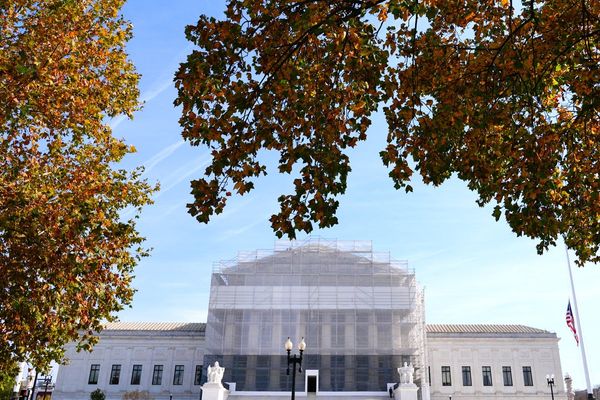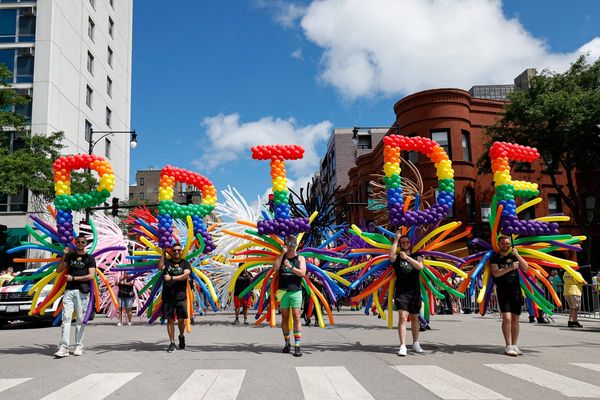
Australians throw away about 27m toys each year. It’s not just a niche issue – about 87,000 tonnes are sent to landfill every year.
About half (51%) of new toys sold become waste within a year, according to research commissioned by the Australian Toy Association and Sustainability Victoria.
But getting rid of toys can be tricky. They’re challenging to recycle, and when they’re in good condition or have sentimental value, people find them hard to throw away.
Why families are swapping instead of shopping
Reuse through charities, toy libraries and swaps offers preloved toys a second life and an alternative to landfill.
Jenna Condie, a social scientist based in the Blue Mountains, has been organising a regular children’s clothes and toy swap since 2022. The idea is simple: families bring items they’ve outgrown, but not outworn, and can take home others they want or need. The local event has been growing in popularity, with 85 families participating in the most recent swap.
Having become a parent shortly after the black summer bushfires, Condie sought opportunities for climate action and community organising. They included joining the advocacy group Parents for Climate.
“When you’ve got a child, and you’re concerned about their future, and you can see this relentless consumerist capitalist system, how do you actually resist that?” she says. “You can’t do that individually.”
The swap is a community event that aims to shift consumption practices and normalise climate action, she says. It also aims to bring people together and support them in a cost-of-living crisis.
There are tangible benefits. “This is reducing landfill waste,” she says. “This is us redistributing, on average, 250kg of clothing and between 50 and 100kg of toys every swap.”
It’s also a space for parents to hang out and for children to play. “It’s an early entry point for children into exchange and reuse, and they really get a lot of joy out of the toys.”
Sydney’s biggest ever toy trade
The growing grassroots movement is coming together from 1 to 14 September to create Sydney’s first citywide toy swap. It will feature eight community-led events across greater Sydney and the Blue Mountains.
“It’s more than just a swap,” says organiser Jacky Lo, a director of the not-for-profit Joy of Giving. “It’s a movement of joy and care for the planet, for our communities and for our children’s future.”
Lo started running toy swaps in Marrickville in 2019. This year he has joined other community-led swaps, councils, schools and climate groups for the biggest event yet.
It’s not the only swap happening around the country. In Melbourne, the Big Toy Swap will be held at Federation Square on 2 October.
Who can join a toy swap?
Anyone can come to a swap, Lo says. The main requirement for those bringing toys to swap is that they are in good condition, clean and complete. Toys can range from the small – such as a Shopkin or dinosaur figurine – to something as large as a Squishmallow.
Everyone is welcome, even if they don’t have something to trade. Lo says a swap can be a fun opportunity for children to learn about reuse and the sharing economy, and for parents to talk with them about the environmental impact of buying and throwing away plastic toys.
If the next generation can learn to reuse first, instead of buying new, it will help to reduce the amount of plastic waste going to landfill, he says.
What if you can’t find a swap nearby?
Swaps aren’t the only way to tackle toy waste. Australia has more than 280 toy libraries that lend a vast array of toys, puzzles and games, usually for a small membership fee.
Toys that aren’t wanted or suitable for swapping or donating to charity can be recycled at Big W stores. Its toy recycling program has collection points for preloved toys at each of its 179 stores.
Toys in good condition are donated to the Salvation Army for secondhand sale. Those that remain are sorted and recycled where possible.
Condie says at an individual level people might sometimes feel their actions to help the environment – such as composting or recycling – do not make much difference, but a toy swap shows how change can happen within a community.
“We’re showing a community-led response to waste and consumption and shifting our collective practices into something else that’s more sustainable, that’s more caring,” she says.







